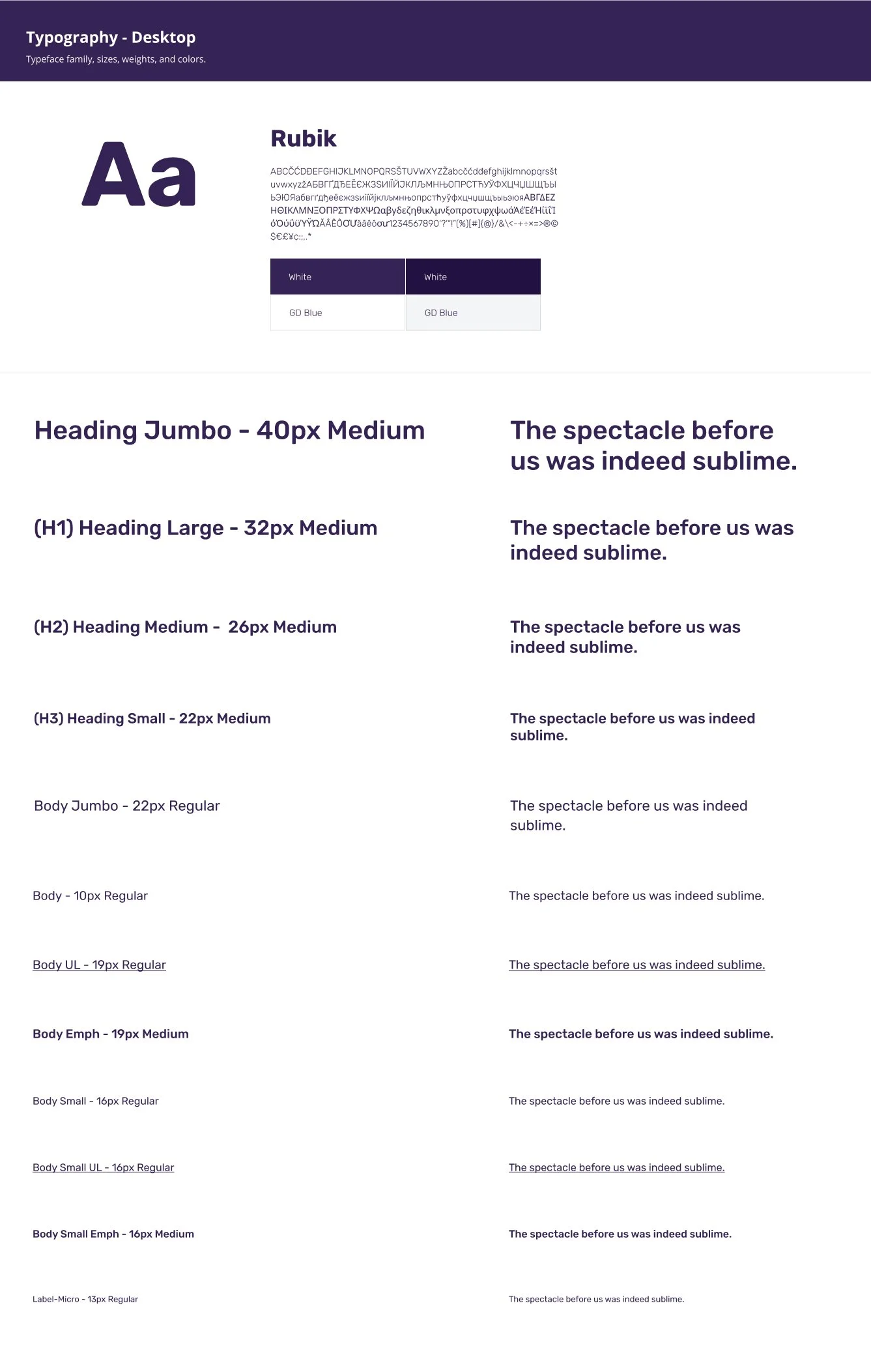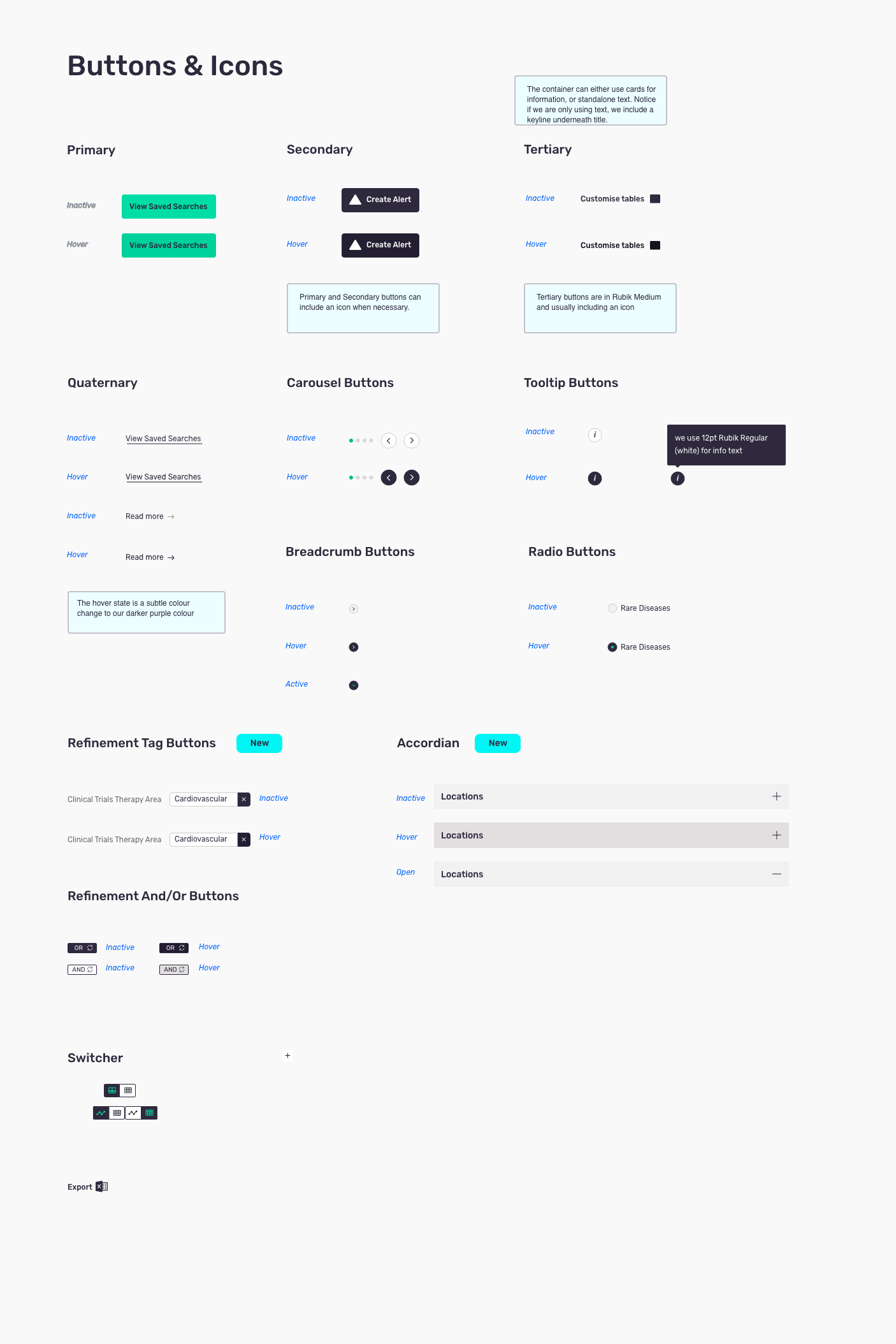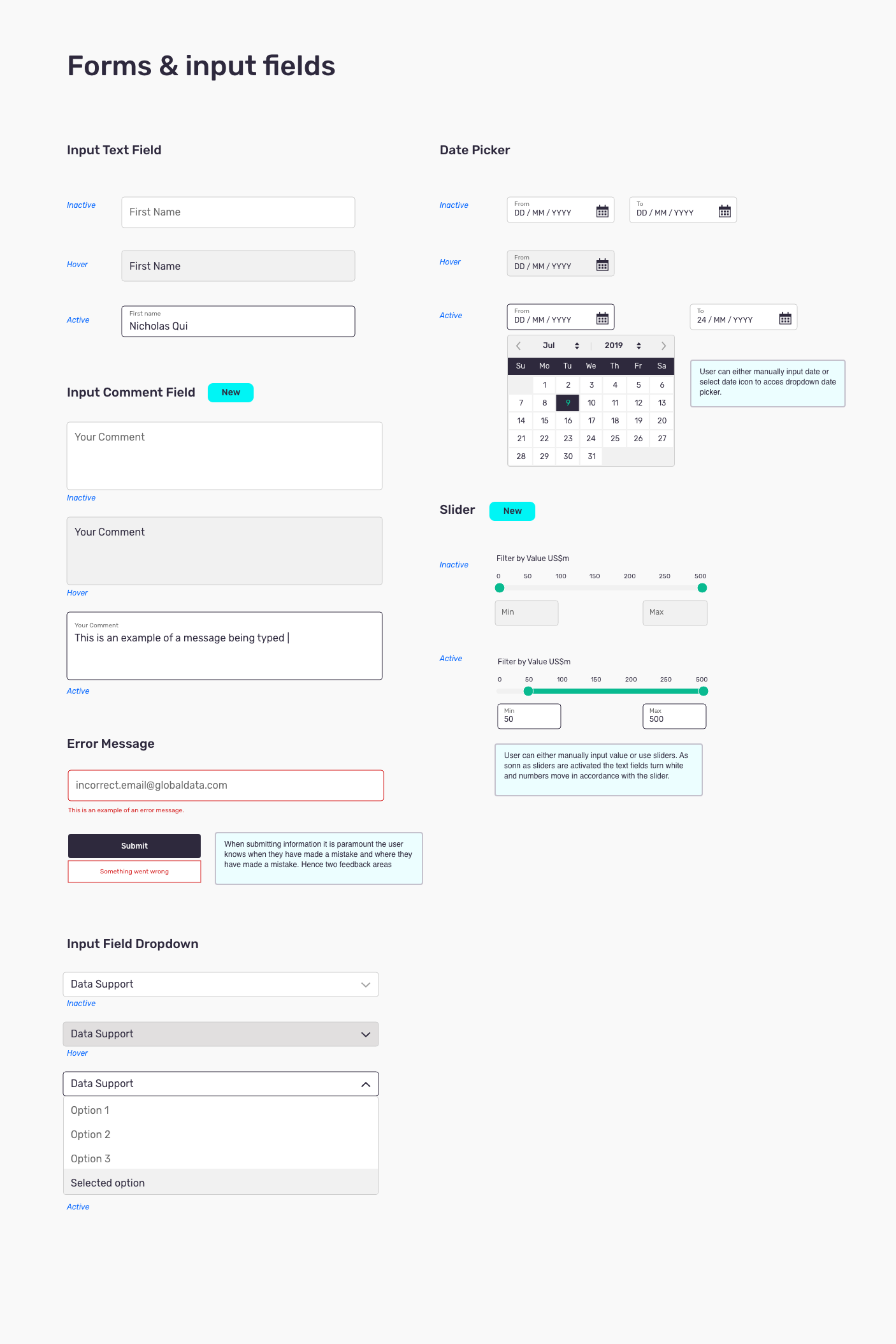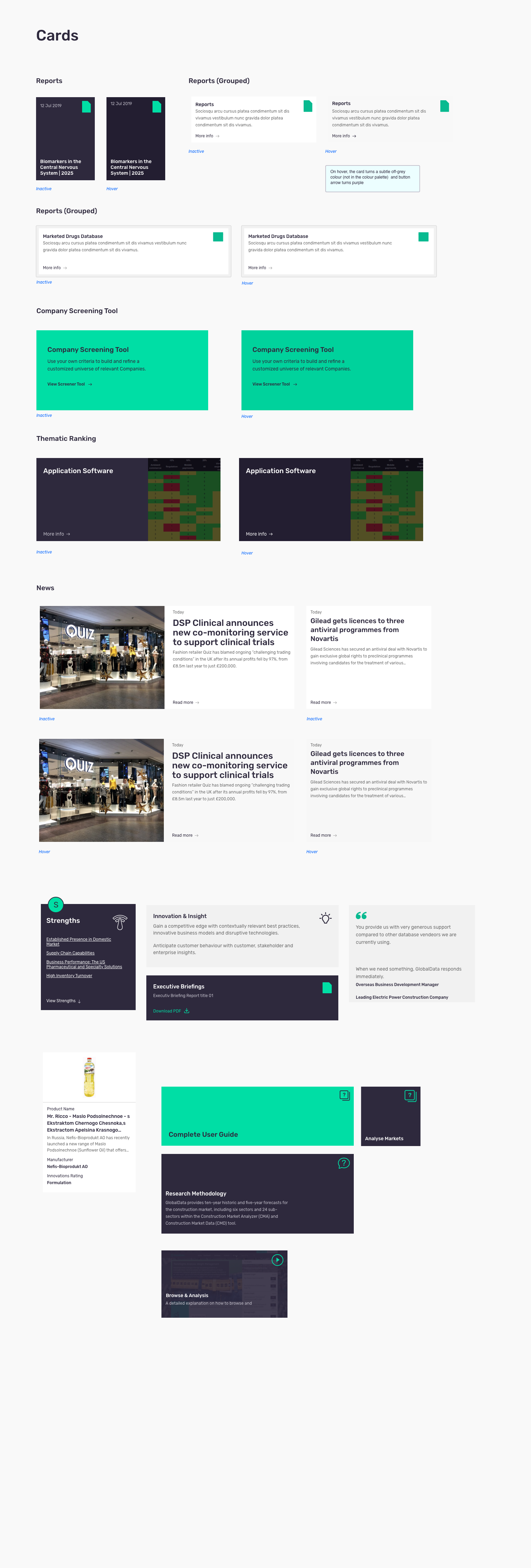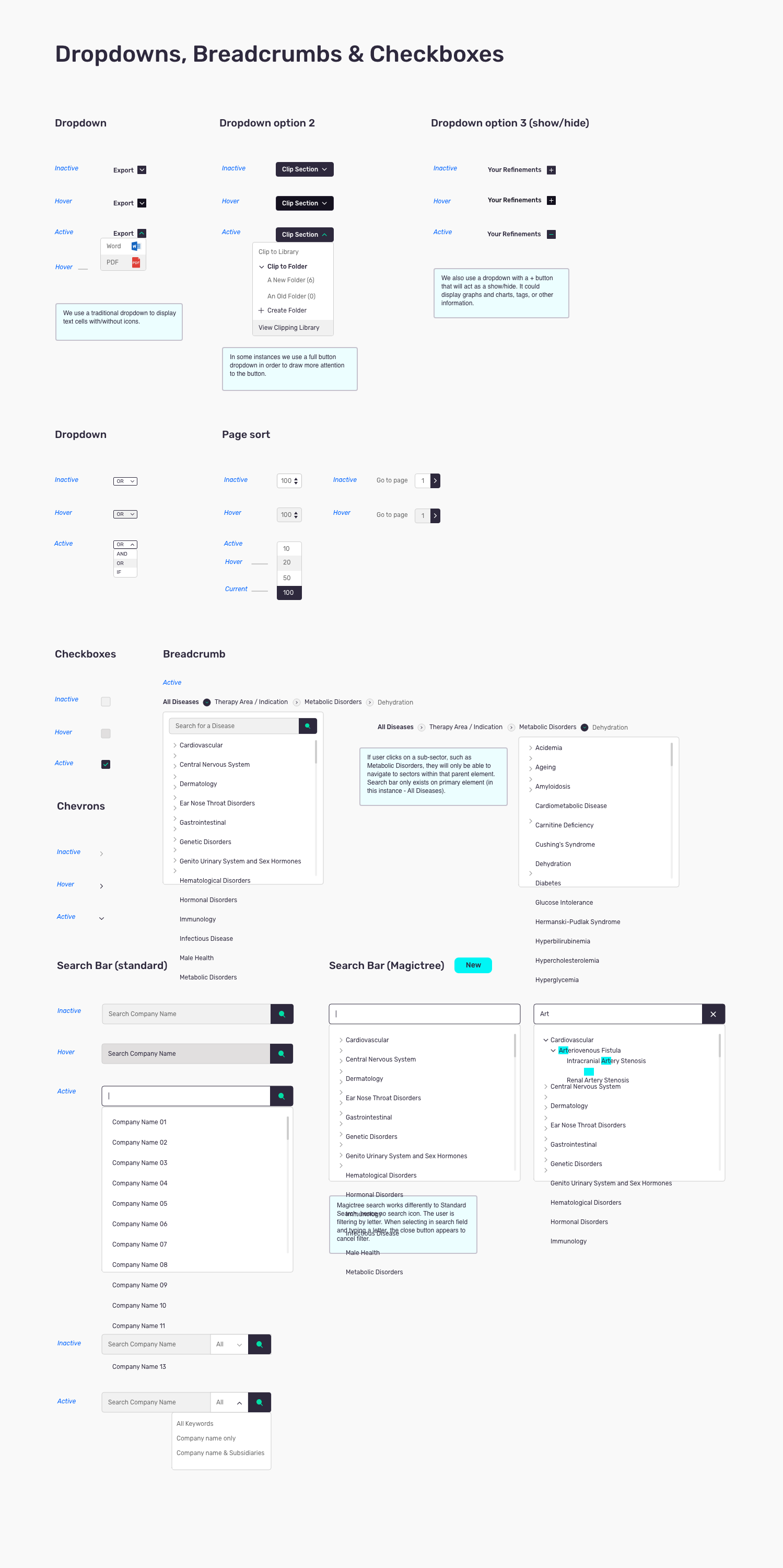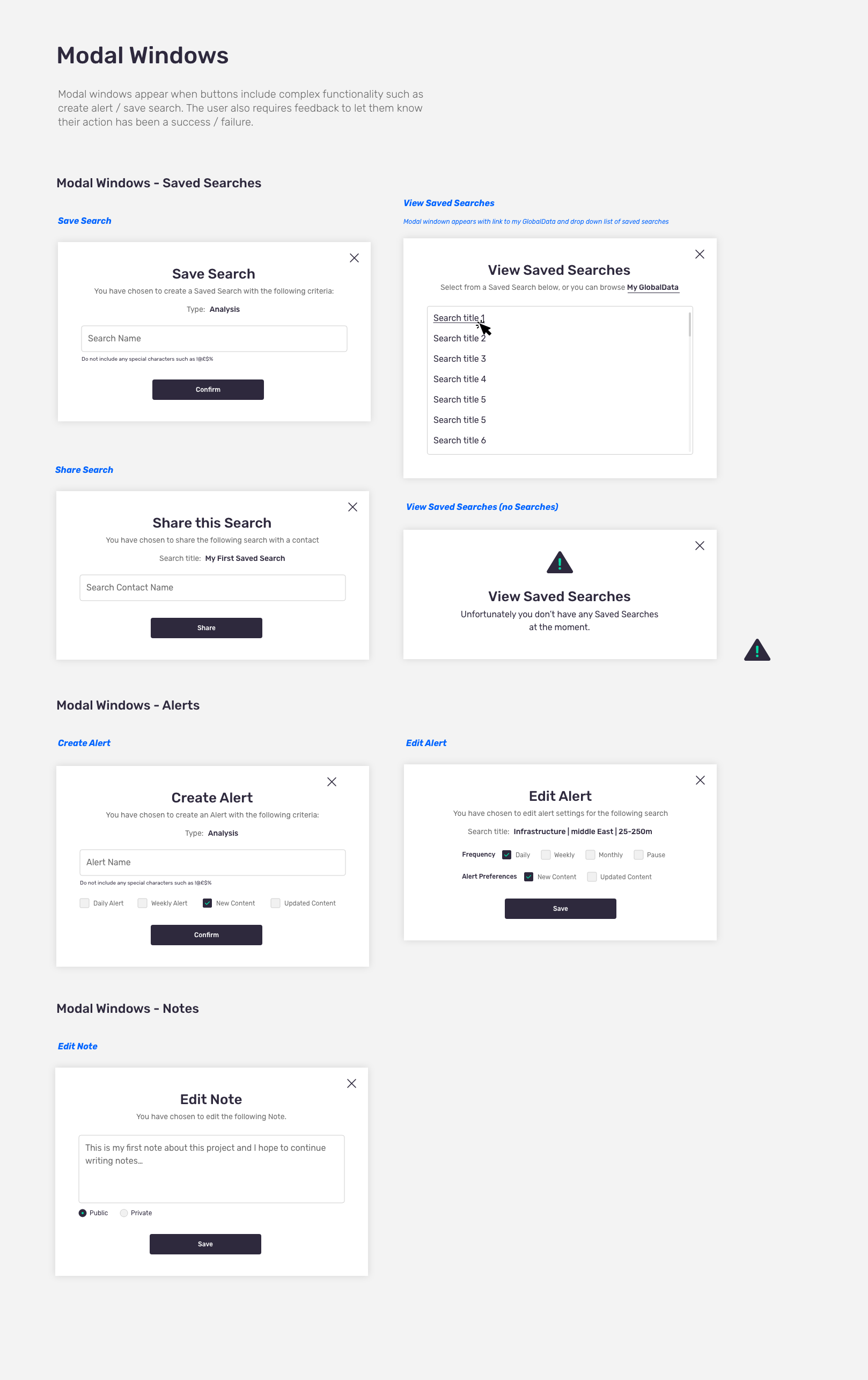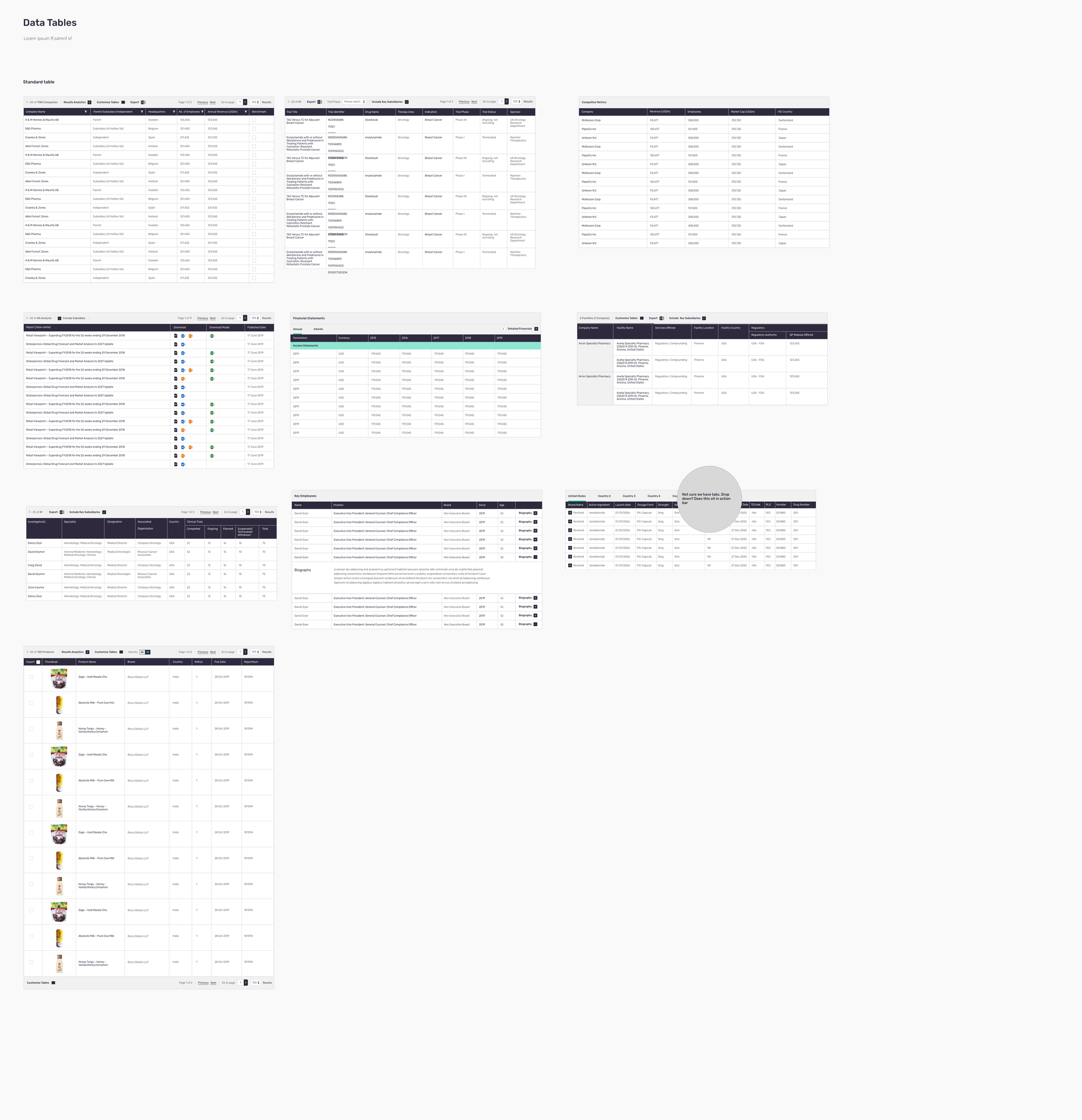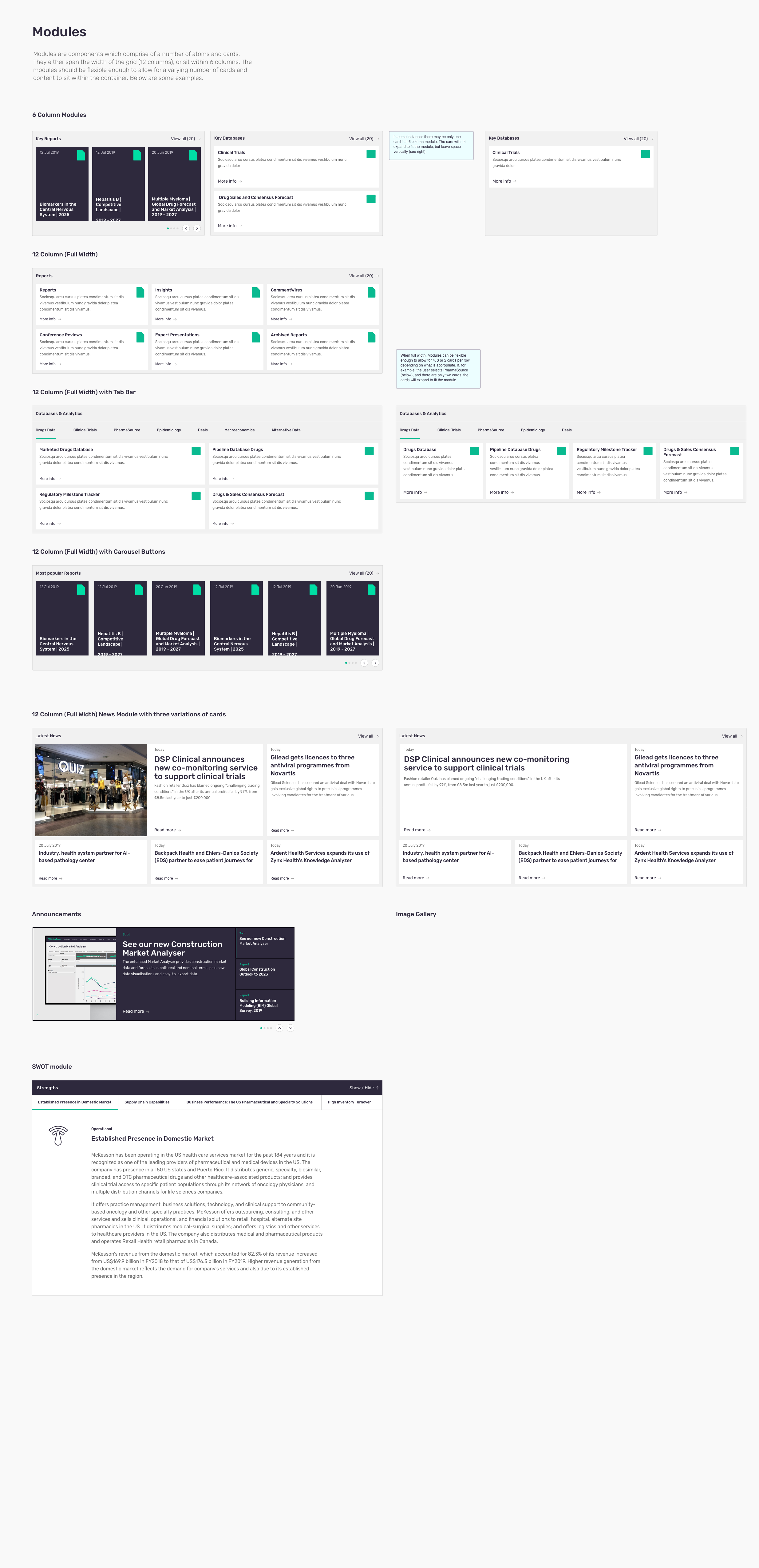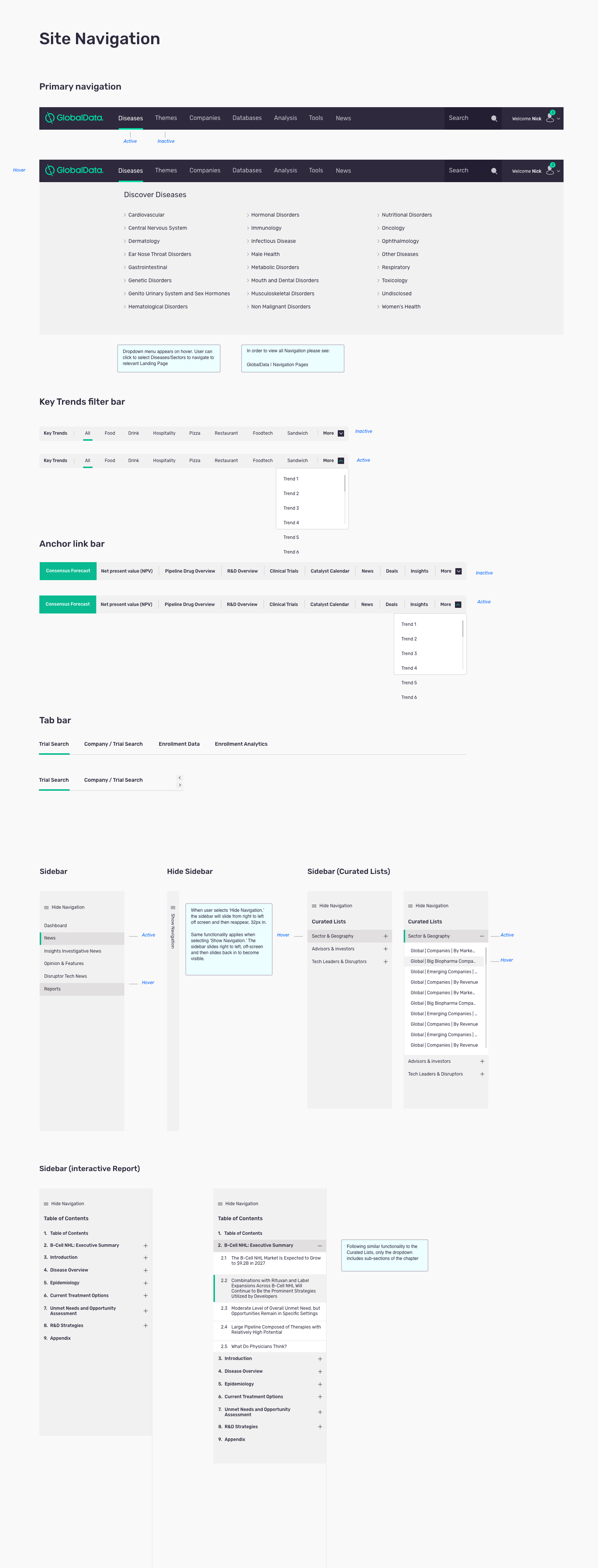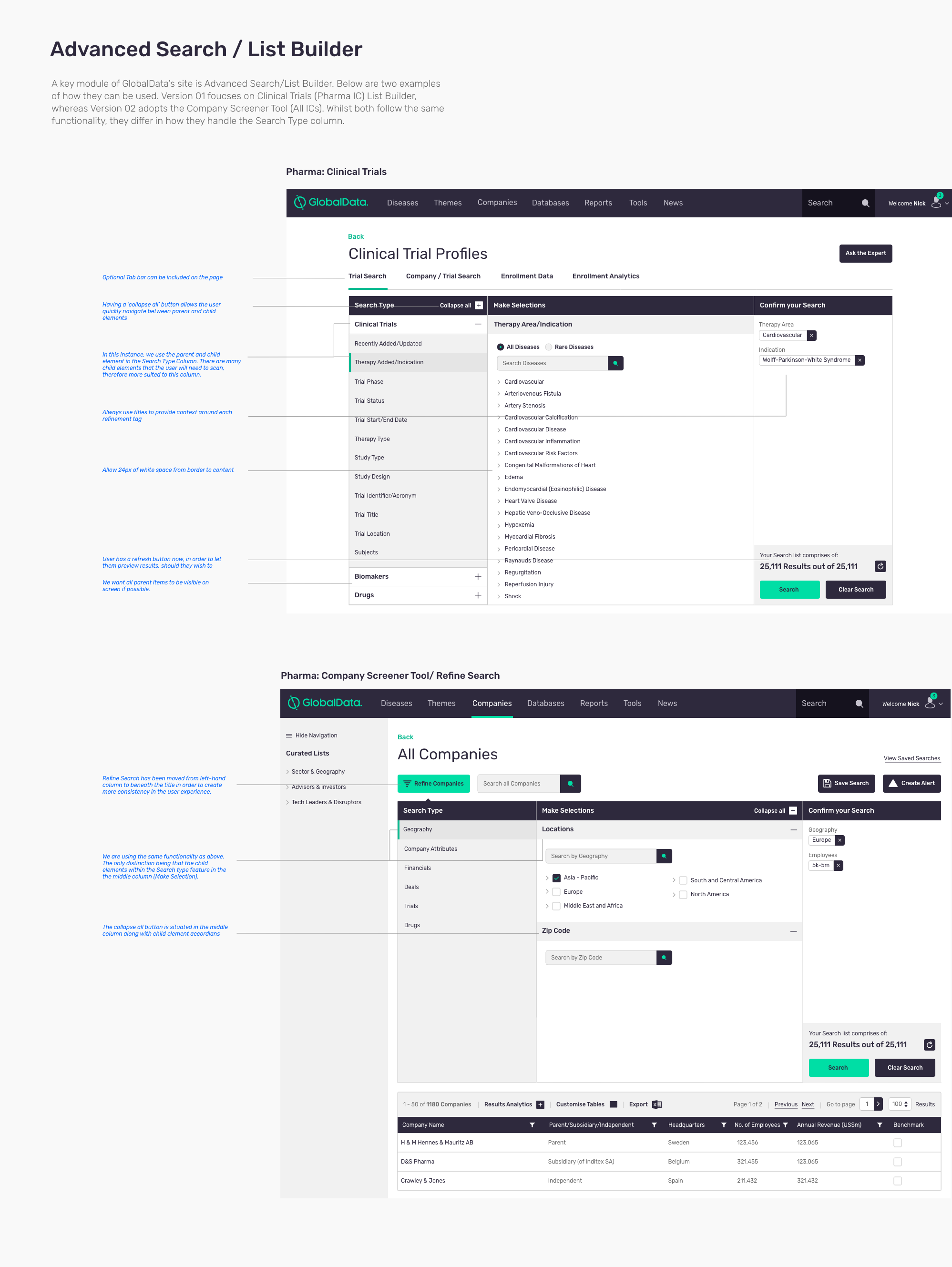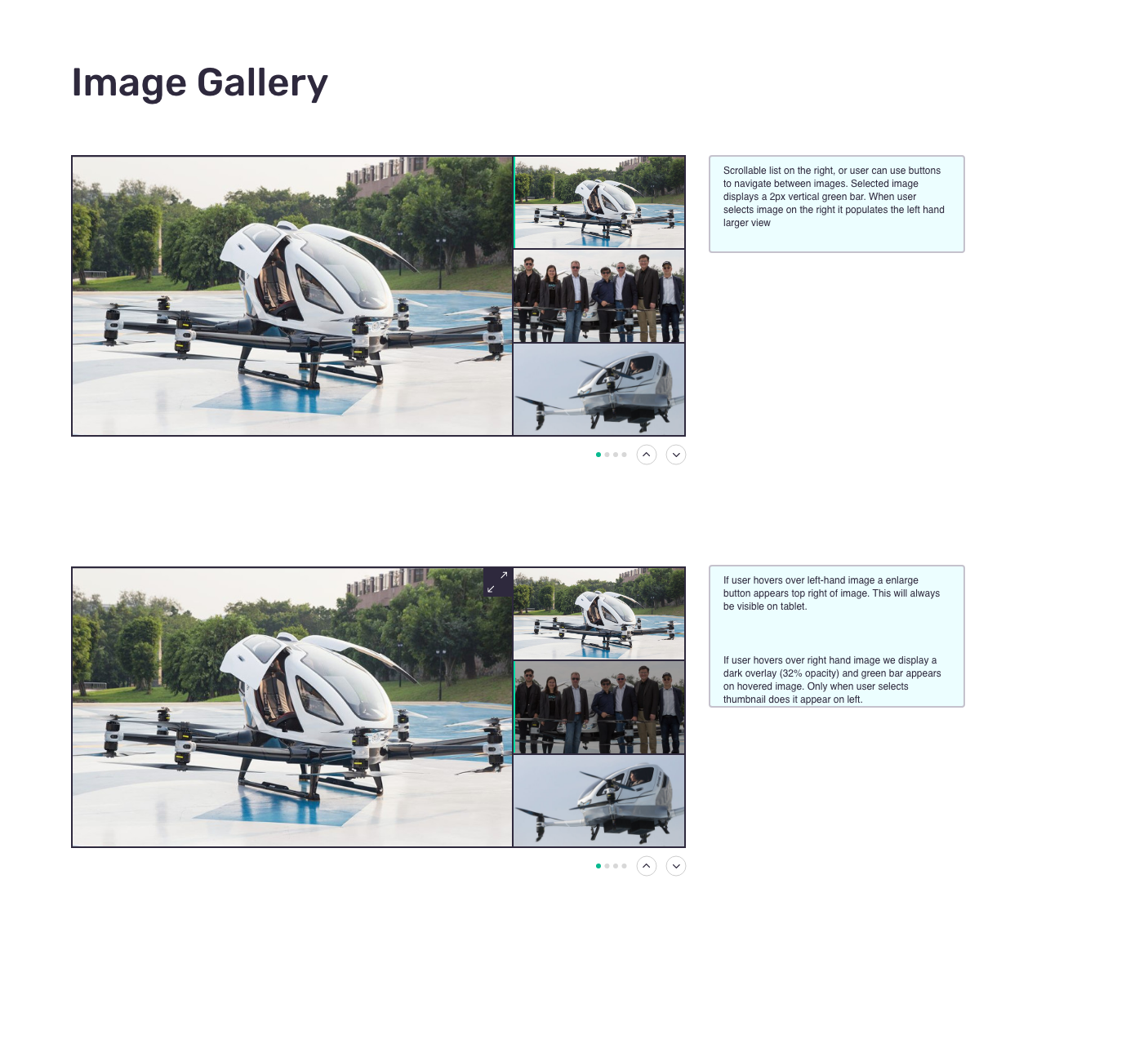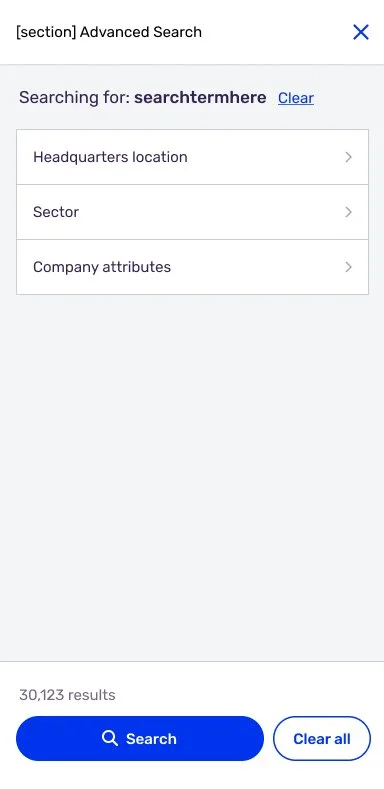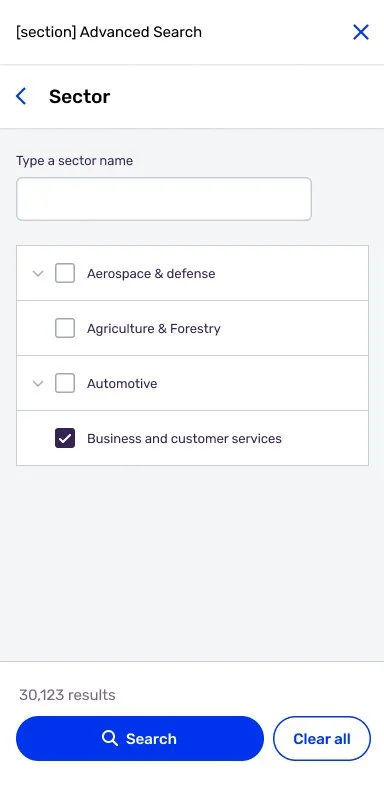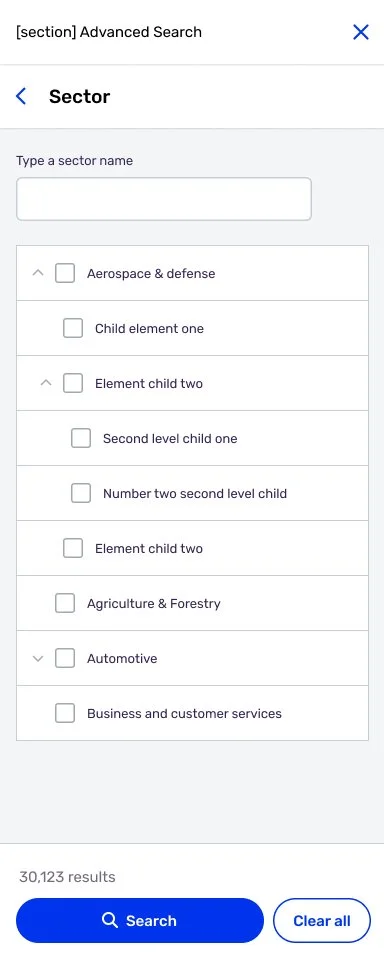Global Market Intelligence Platform
Client: Globaldata Market: Market Data, Research, Information Services
Product: Enterprise market intelligence platform providing unique data & insights
Website: globaldata.com
The world is becoming more complex, uncertain, and fast-moving than ever before, which is why GlobalData exists. The mission is to help clients decode the future to be more successful and innovative.
Globaldata creates trusted intelligence on the world’s largest industries by leveraging their unique data, expert analysis, and innovative solutions.
Easily-accessible and fully-integrated into one platform, Globaldata’s Intelligence Center solution helps companies, government organisations, and industry professionals make faster, more informed decisions.
The Challenge
The challenge in designing the Global Market Intelligence platform was to create a solution that would provide users with a seamless and intuitive experience while accessing and analysing large amounts of data.
The platform needed to be highly customizable and allow users to easily find and analyse the information that is relevant to their needs. Additionally, the platform needed to be accessible from both desktop and mobile devices, and provide users with access to the latest information at all times.
I designed most of the platform and here below is just a few things I focused on relating to patent intelligence.
- Patent Landscape & Insights
- Portfolio Management
- Patent Mapping & Visualisation
- Patent Forecasting & Analytics
- Patent Monitoring & Alerts
- Patent Valuation & Licensing
- Patent Litigation & Legal Analytics
- Intelligent Workflows & Automation
- Patent Metrics & KPIs
- Patent Applications & Processes
- Patent Classification & Taxonomy
- Patent Expertise & Knowledge Management
- Patent Data & Documentation Management
- Patent Discovery & Exploration
- Patent Analytics & Insights on Companies, Industries, and Trends
- Patent Trends & Market Intelligence
- Patent Analytics & Reporting
User personas
In order to design a platform that would meet the needs of a diverse range of users, it was important to identify different user personas and understand their unique needs and challenges. The following are three user personas that were identified during the design process:
Enterprise User: The Enterprise User is typically a member of a large organization and needs access to comprehensive and up-to-date information on various industries to make informed decisions. They are highly experienced and knowledgeable in their field and require a platform that gives them access to the latest information and allows them to easily analyse data.
Small Business Owner: The Small Business Owner is typically the owner of a small to medium-sized business, and needs access to information on their industry and market trends to make informed decisions. They are usually time-sensitive and require a platform that provides them with quick and easy access to information.
Researcher: The Researcher is typically an academic or an individual who needs access to comprehensive and in-depth information on various industries for research purposes. They are highly knowledgeable in their field and require a platform that provides them with access to the latest information and allows them to easily analyse data.
User Research
To understand the needs and challenges faced by the Enterprise User around patent intelligence, a number of research methods were used, including user interviews, surveys, and usability testing. Industry-standard tools, such as UserZoom, were used to conduct the usability testing. The research focused on understanding the manual workflows of the Enterprise User and identifying any pain points or areas for improvement when searching and retrieving data. I tested and monitored users using the following features.
Identify key classifications
Citation Network - Patent
Similar Patents
Preferences/ Application Mode (1st option)
Filtering by Legal Status and Life State
Number Search
Boolean Search
Number Seach, Fielded Search, Custom Query, Proximity and Wild-card based search features
Compare View
Field Validity
Semantic Search
Patent Assignee Categorisation
Patent strength Index
User Input - Relevance Indicator
Searching, sorting and filtering in Table columns
Patent IR Relevance - System Generated
Similar Patents in the Record
Similar Patents
Invention Life Cycle
User Research Results
The research revealed that the Enterprise User was facing a number of challenges, including the need for a more intuitive and user-friendly platform, a lack of customisation options, and difficulty accessing information from mobile devices. They also expressed a need for a platform that provided them with access to the latest information and allowed them to analyse data easily. Below you will find a list of product requirements that derive from my research findings that relate specifically to the patent intelligence side of the platform.
Product Requirements
The patent research revealed that the Enterprise User was facing a number of challenges, including the need for a more intuitive and user-friendly platform, a lack of customisation options, and difficulty accessing information from mobile devices. They also expressed a need for a platform that provided them with access to the latest information and allowed them to analyse data easily. Below you will find a list of product requirements that derived from our findings through research and mostly relate to advanced search.
For Patents 2.0, various additional fields have been identified, which need to be added to Patents DB, so that frontend functionality can function. These relate mainly to the Patent strength indicators.
Tag patents as one of the 21 categories. Tables from Backend will be provided to Frontend.
To implement the logic deriving forward citations, and saving it in the Patents Database. To have a workflow implementation, so that the system updates itself on the insertion of a new patent publication record. There is a frontend widget requirement (separate), which will consume this data.
To implement the logic so that we can calculate the patent expiry date
The graph visualizes top classification based on the number of filed records classified under that schema
To split the NPL References into various fields.
This analysis displays the patent citation network for the selected publication
To implement logic to identify similar patents, to a given patent/family/ portfolio. Naveen has implemented a similar patent logic.
We shall have two modes, Explorative mode and Directional Mode. Making filtering/refinement options available dependent on previous selection/data to avoid zero results hit. In explorative mode all the filters are available all the time, In directional mode, the user is further filtering on the previously selected sets and unassigned values are not considered, and can only see the filters which are based on features with value ranges present in the result-set (data set). Single toggle. Explorative mode is where by default all search parameters are of "OR" Boolean nature, in Directional mode they are all of "AND" Boolean nature (currently implemented). From the display of filters, also the behaviour is same. For explorative, all the filters are available all the time, but in directional mode, only those filters are available which can further refine. If the user changes the mode in between, the query changes and the result set expands or restricts. by default the mode is directional (current implementation) We can put this is "Preferences"
Frontend aspects, allow users to filter by Legal Status and Life state.
To enable the tool searchable by various number identifiers, like, Publication, Application, Citation and Priority Numbers. A simple search field, where a user can type in these numbers and retrieve those documents. The user can input any format of the number, and we shall be able to retrieve the publication. The tool shall use the standardizer to retrieve the publication. The spec will explain further the logic.
Our users want to use Boolean search operators in our queries. Currently, other product parts have an implementation, we need to lso put it in Patents. Also to have a "NOT" operator in addition to "AND" and "OR"
Making possible search keywords using proximity and wildcard operator e.g., *, $, NEAR, SAME, etc.,
Comparing various entities based on Patent records and activity
validation between fields, need to provide some dependency parameters.
To EXPAND the semantic universe to show more keywords than currently 5 or so.
Preferences- Current, Original, Transient, Point in Time (for that period)
Type-Company, Govt, NGO, Individual This one is coming from the Patent DataTo calculate patent strength based on various factors.
As part of the iteration of finding relevant documents, the user shall input the relevancy of a record, and based on that the system regenerates the result set.
To provide the capability to users, so that they can filter, search and sort the rows based on search criteria in the columns included in the tables.
Per record we need to show a "CTA", on click, it will go to the "Similar patents" tab of the patent details page
Table showing a similar patent to this given patent. The table will also show the similarity score. Clicking on the Pub number will go to the detailed page of that particular patent. The rest of the columns are of Patent Listing.
The legal status timeline analyses all the events across family members showing how the legal status has changed over a period of time and identifying patterns of strategy on the invention
Patent Intelligence - Advanced Search
Advanced Patent Search and ResultsEnterprise users are now using the following search design patterns to access patent intelligence quickly and efficiently. Below you will find generic search queries and results due to proprietary data. However, you can get a good feel for the advanced search experience for patents.
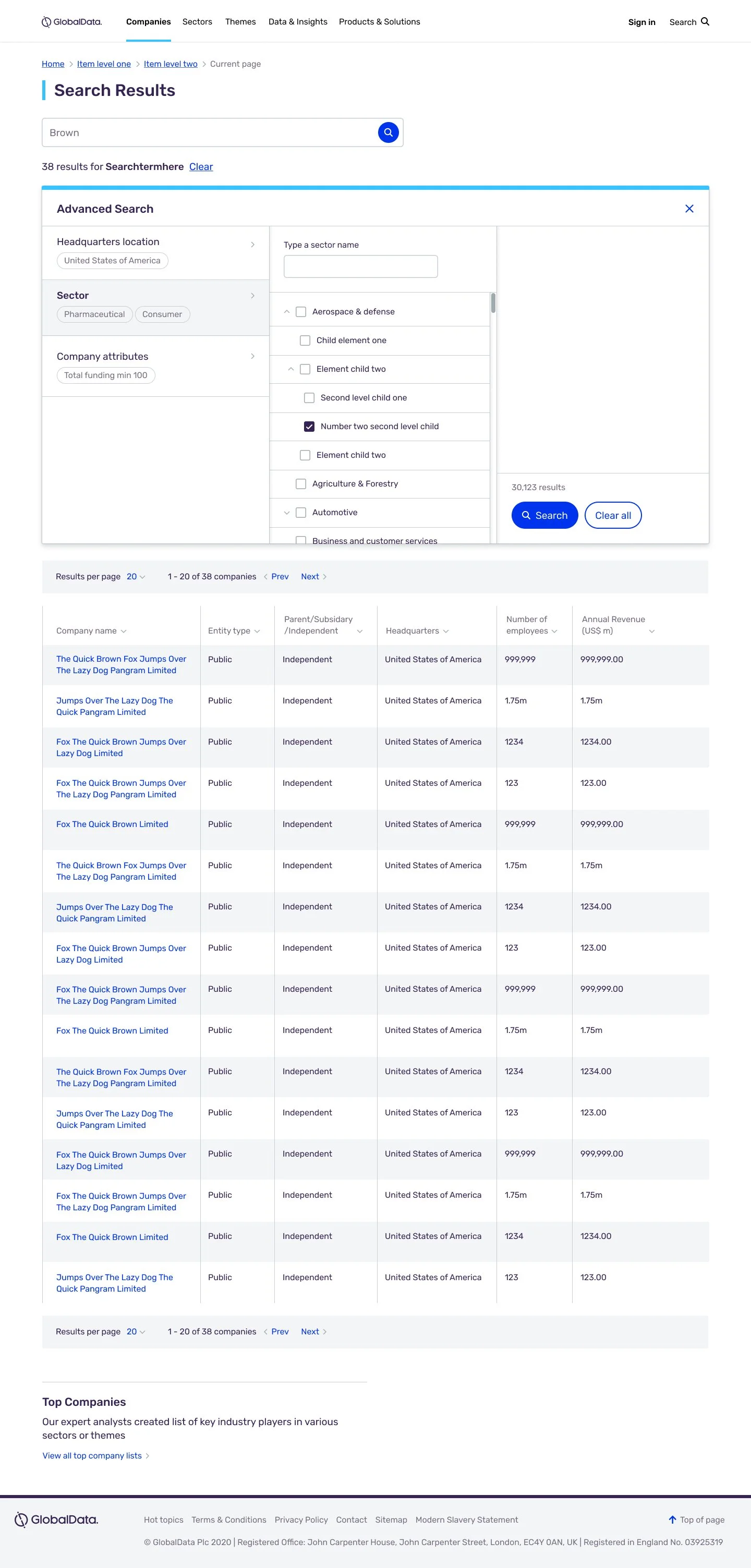
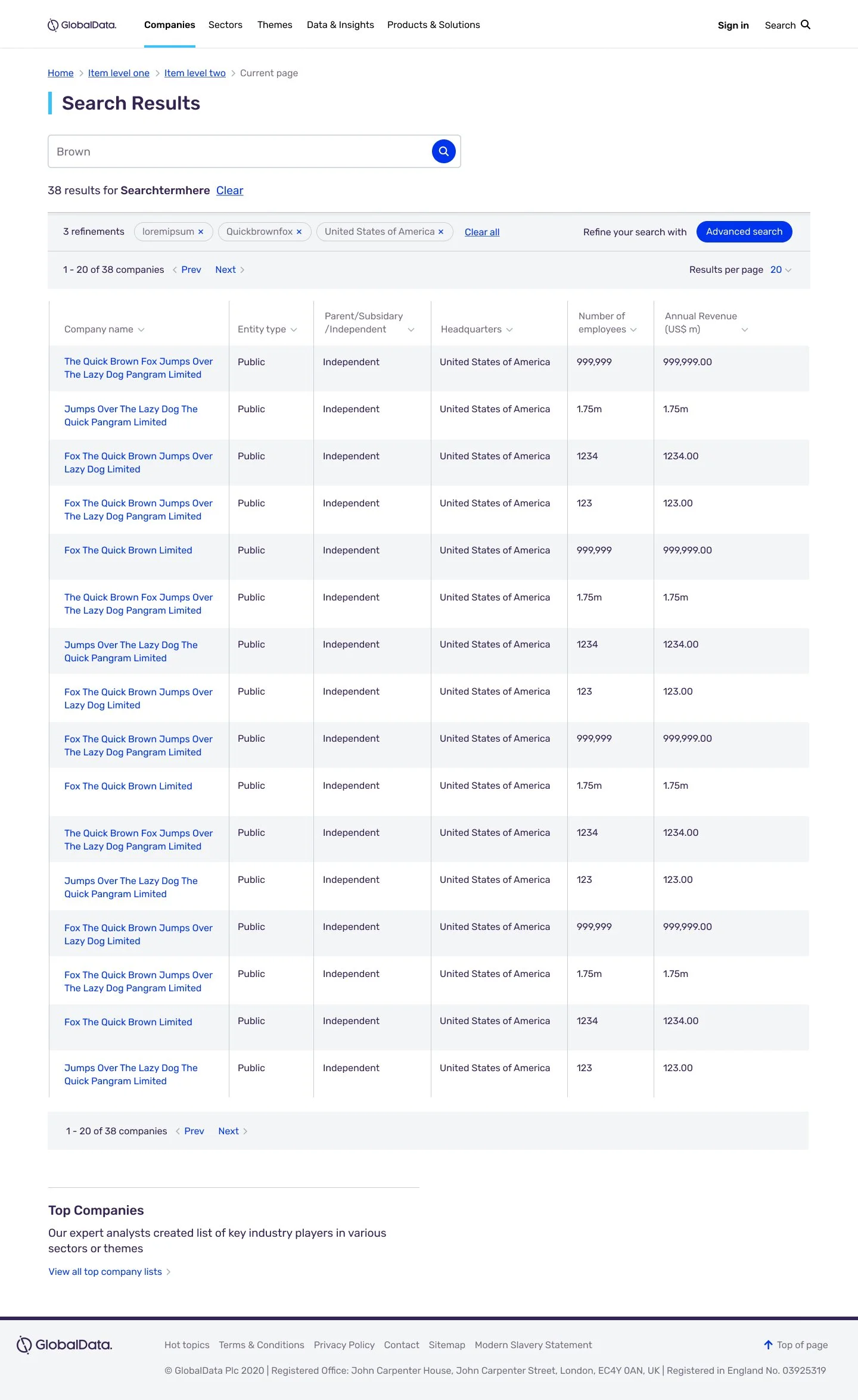
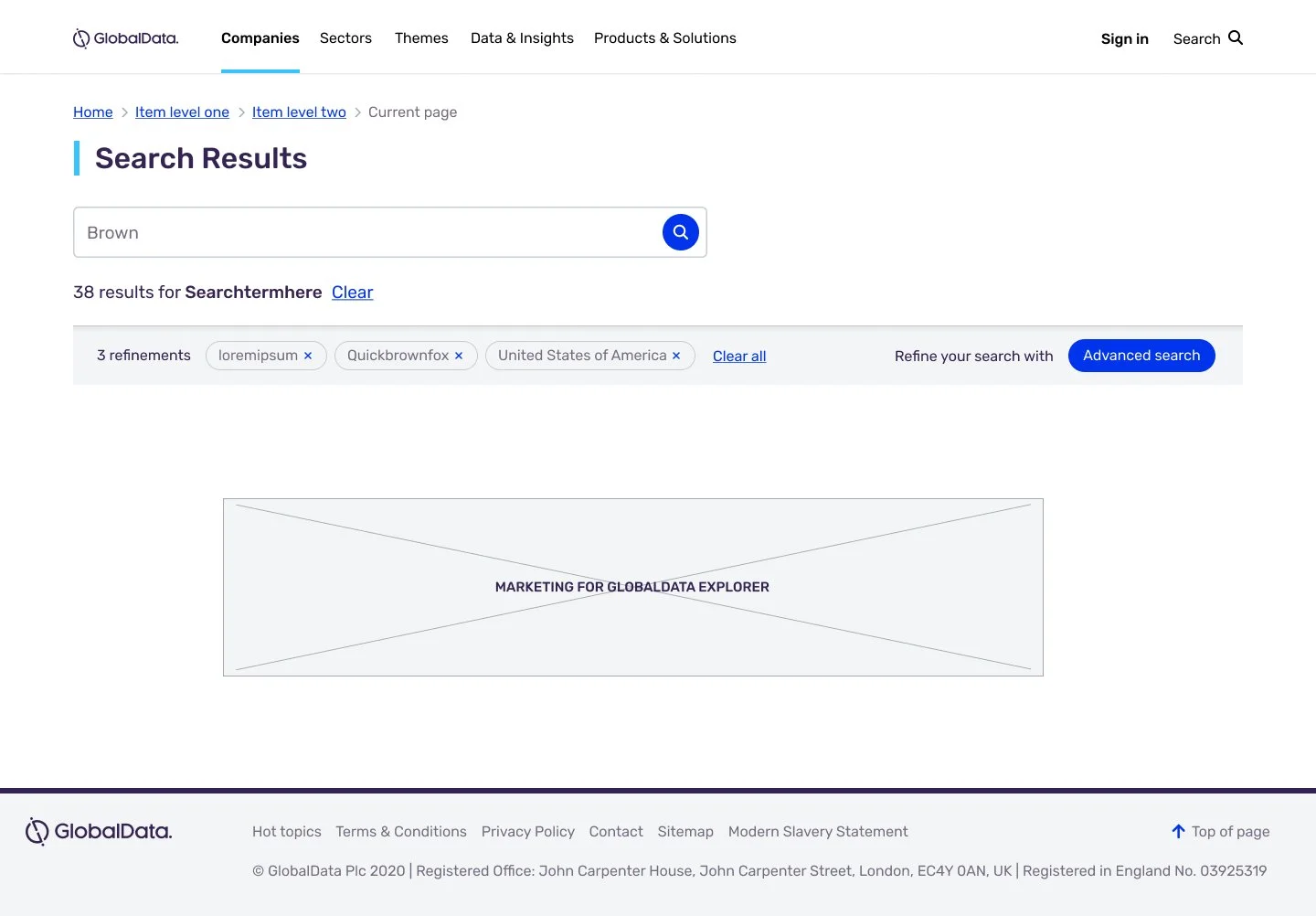
Global Design System
I was responsible for designing and managing the company's design system. This involved creating a comprehensive set of guidelines and components that ensured consistency and efficiency across all product designs. I worked closely with cross-functional teams, including developers and product managers, to ensure the design system was aligned with business goals and user needs. My expertise in user-centred design helped to create a system that was not only aesthetically pleasing but also intuitive and easy to use. By implementing this design system, I helped GlobalData maintain a strong brand identity and improved the overall user experience for their customers.
Design Guides
Desktop & Mobile UI GuidesI was responsible for designing and managing the company's design guides. This included creating guidelines for margins and padding, which are crucial components of user interface design. I made sure that the guidelines were consistent, user-centred, and met the requirements of the company. The guidelines were comprehensive and provided clear recommendations for spacing and alignment across different devices and platforms. This helped ensure a cohesive and coherent look and feel across the entire product line, which contributed to a positive user experience.
Platform Wide Wireframes
Various ScreensI created the mockups below for the newly re-designed platform released in July 2021. Most of the layouts were approved and helped in designing the hi-fidelities.

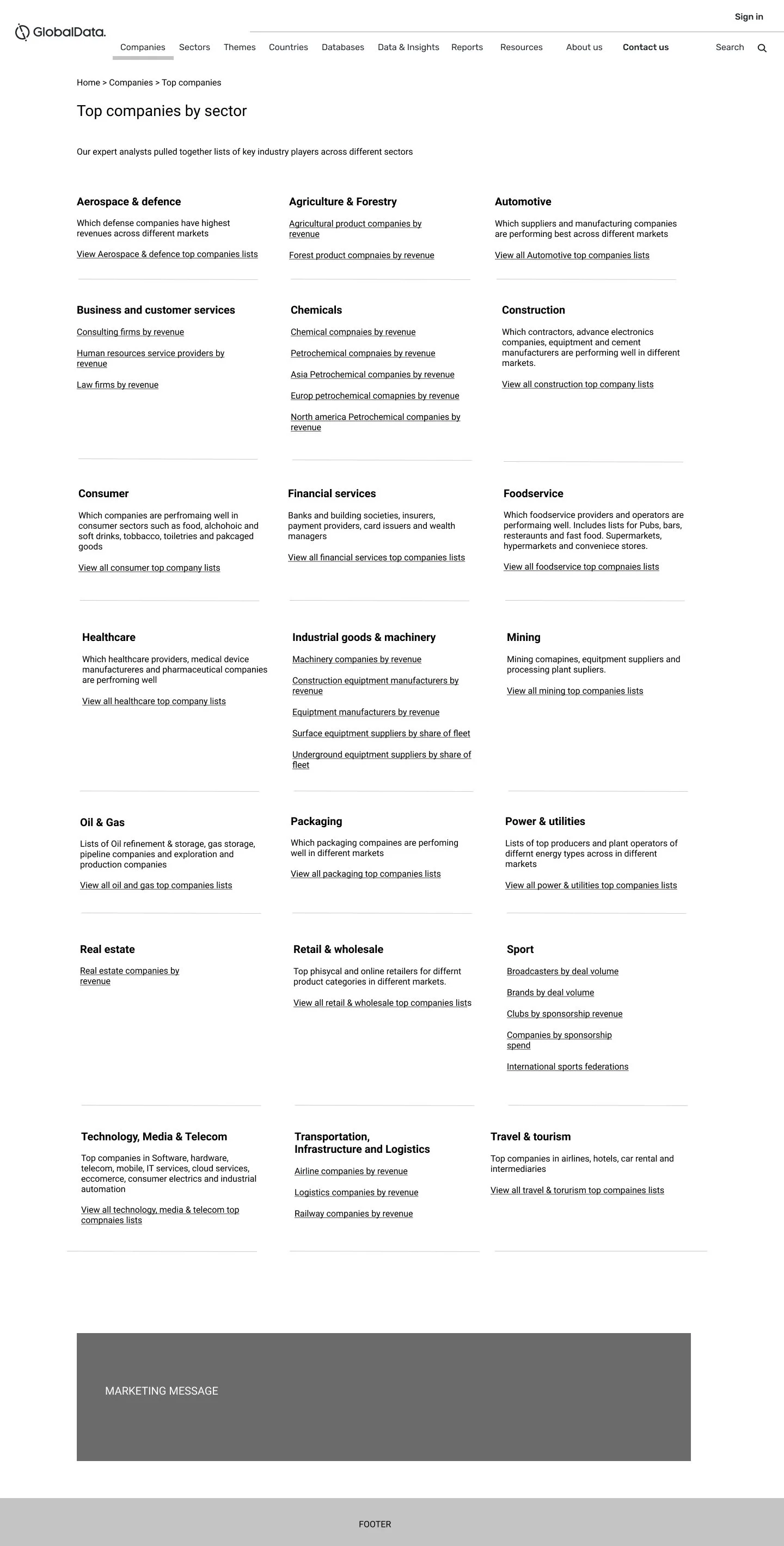



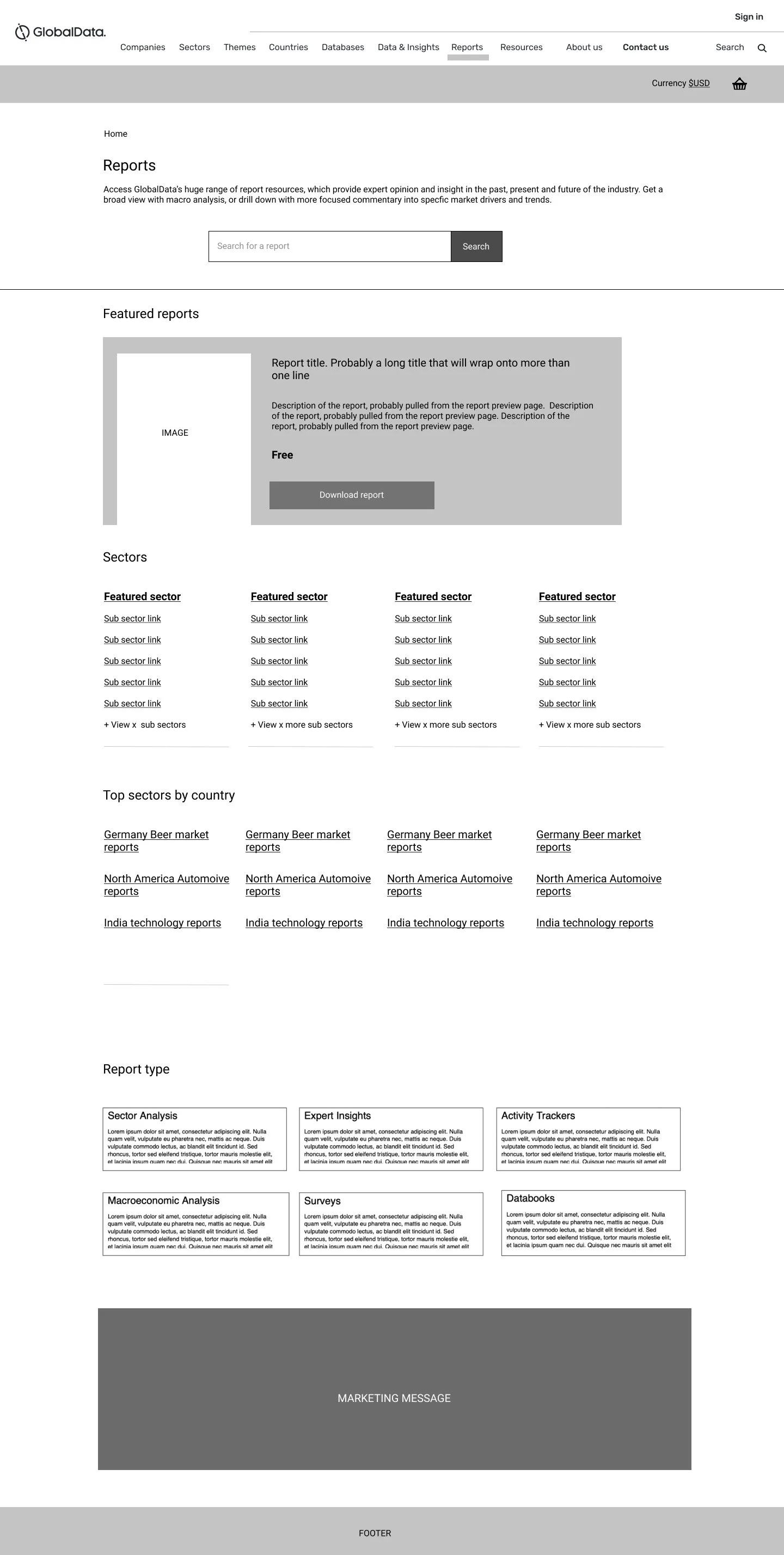

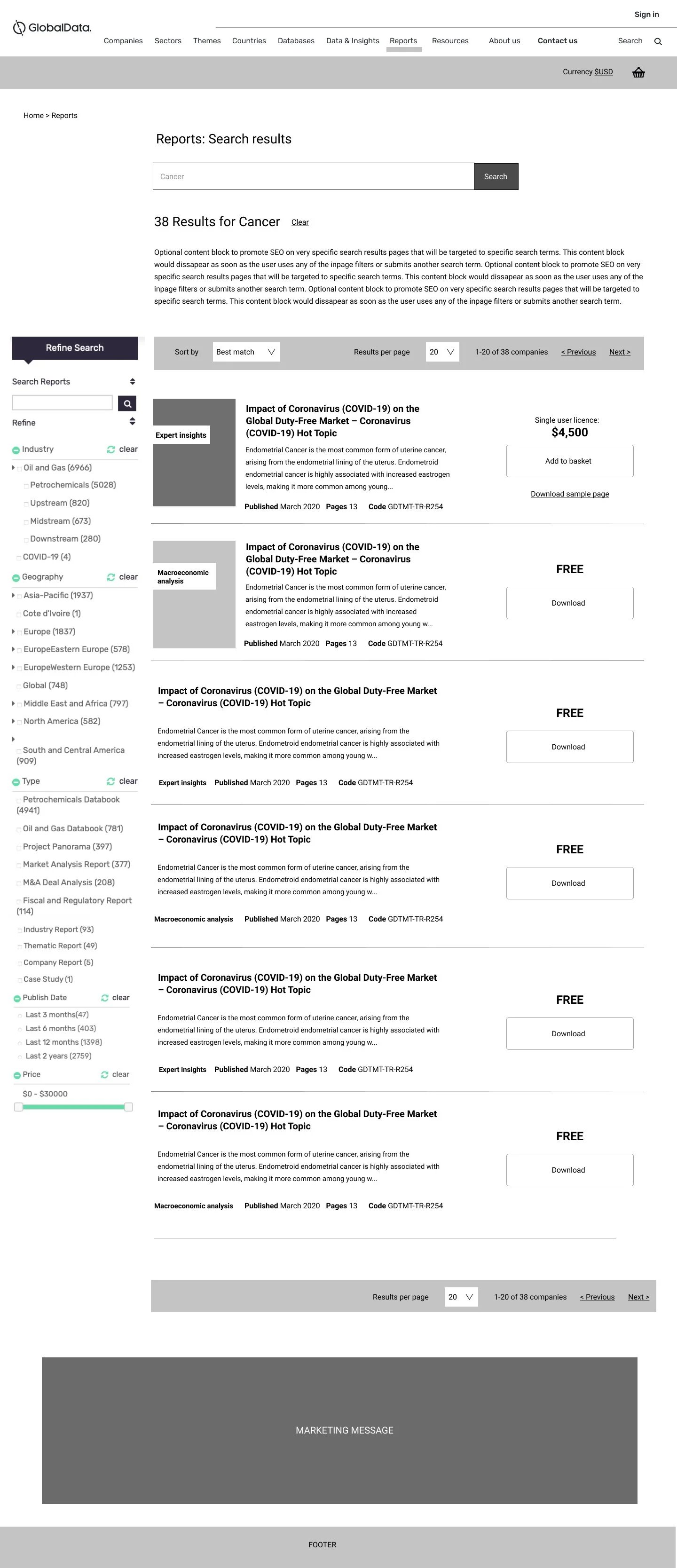
Platform Wide Hi-Fidelity Screens
Main Dashboard & My Globaldata (Enterprise)Home - Where all visitors and subscribers first land to experience Globaldata’s products. There is a nice Google styled search bar to encourage users to search for market data as early as possible.

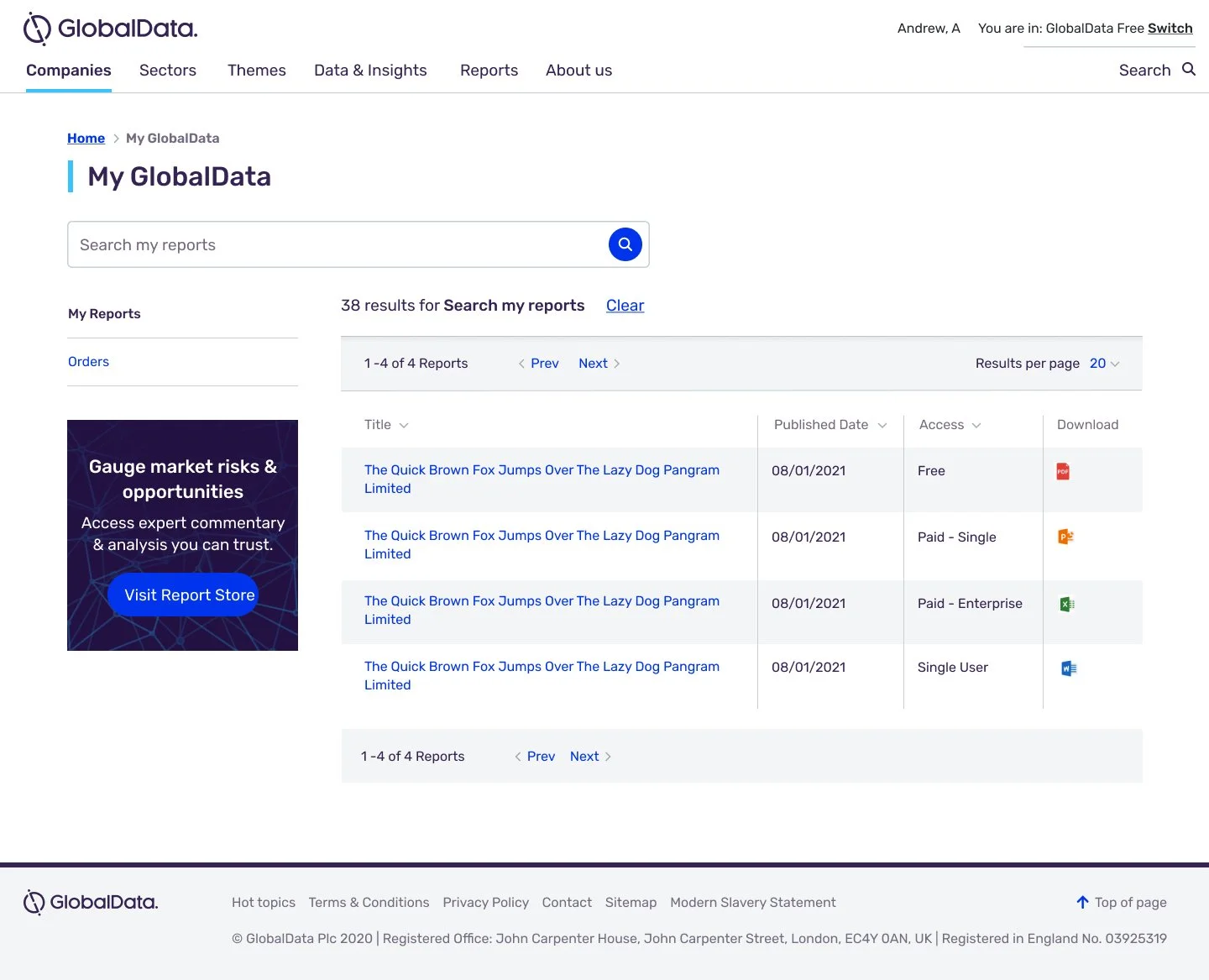

Companies DatabaseA database with a wide range of filters is available. The below screens show that visitors are presented with paywalls if not subscribed and that users can unlock portions of data with various subscription levels.
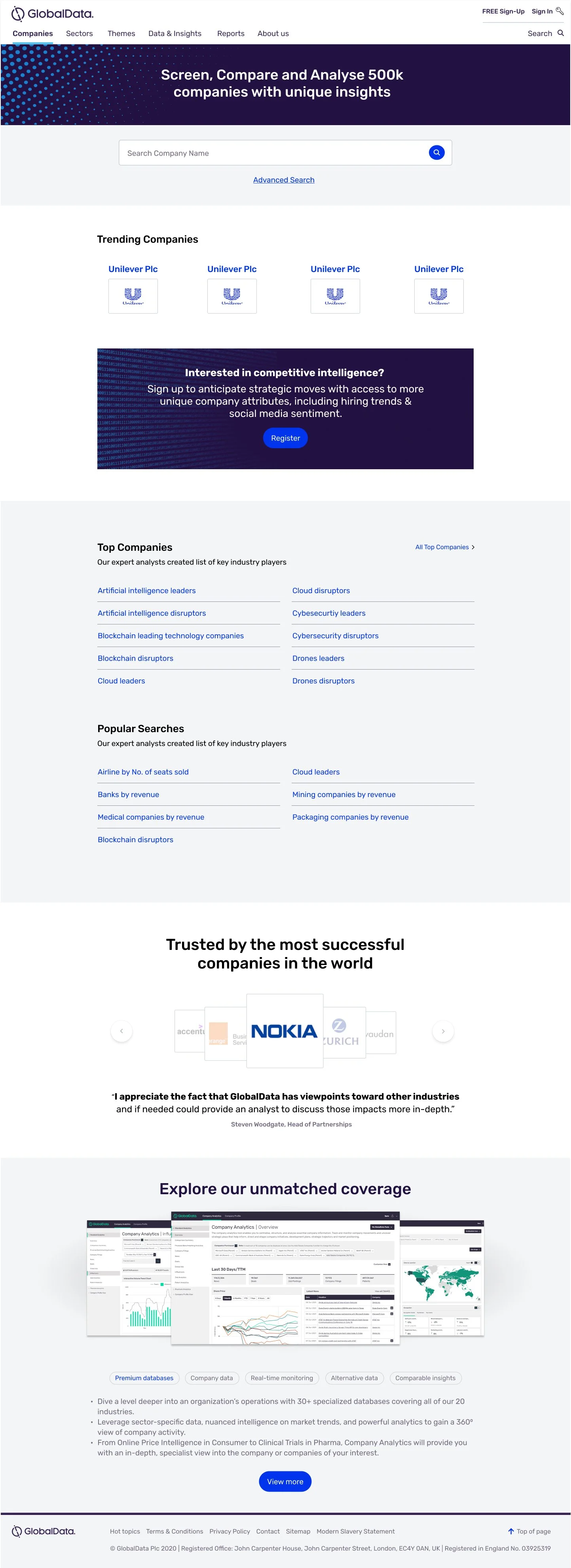


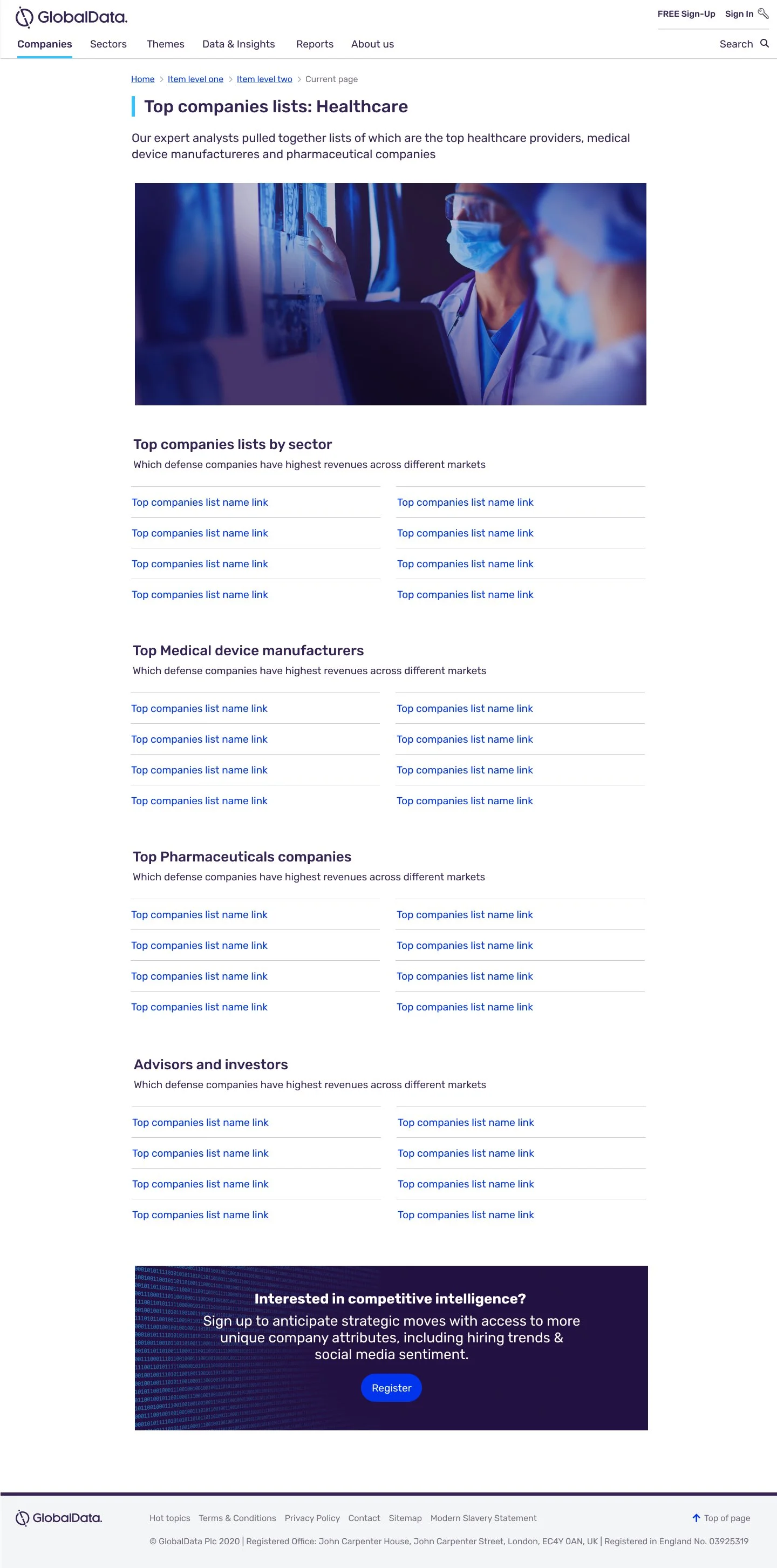


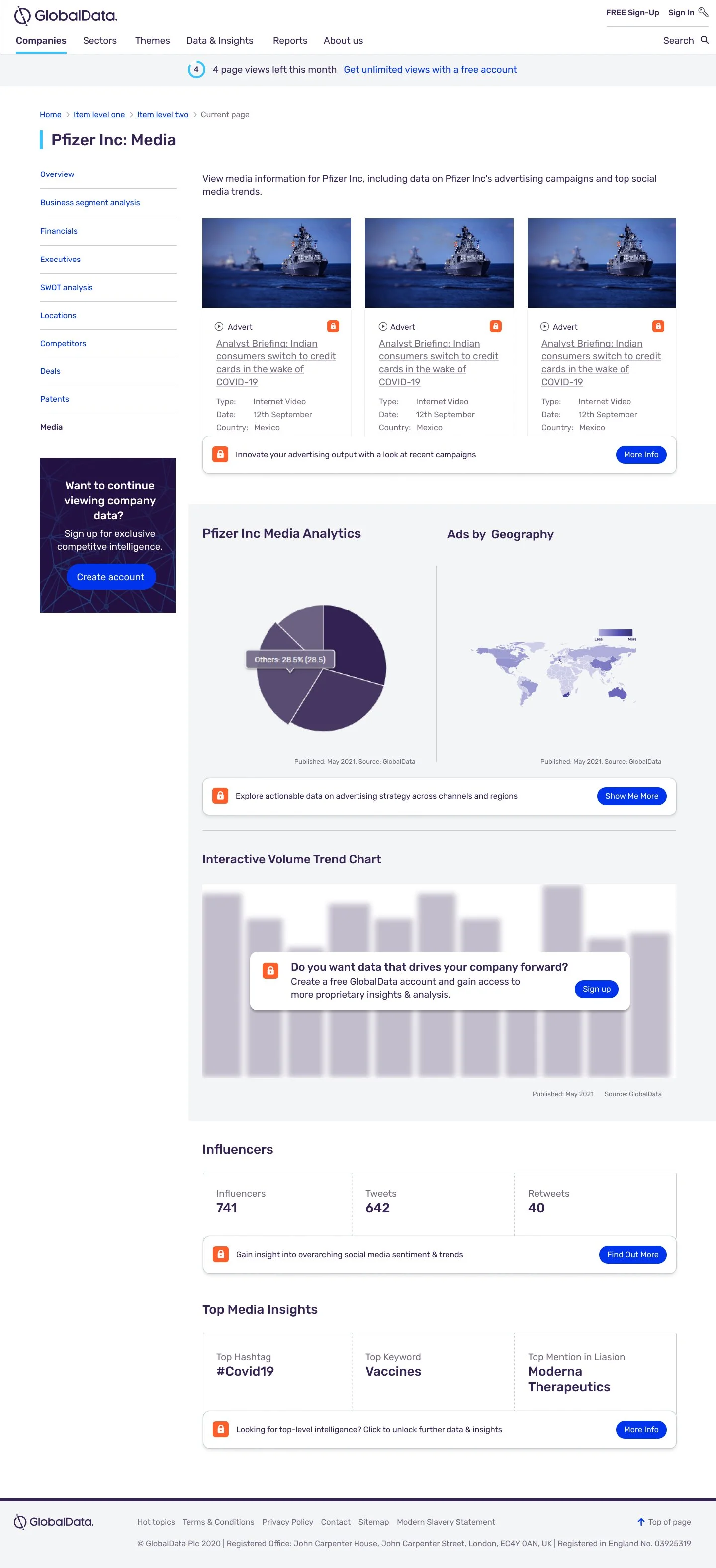

Themes DatabaseA database that offers a wide range of themes to search by. Again, paywalls are presented to the user when they are on a lower-level subscription or have no subscription.
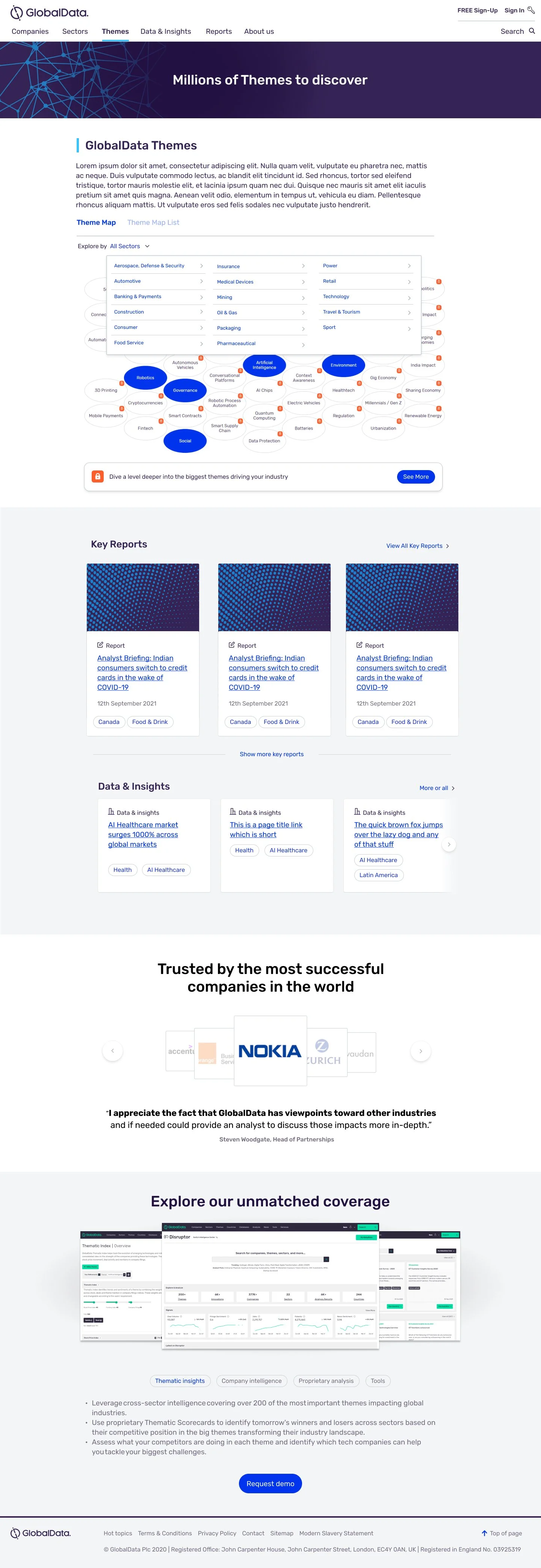


Data & Insights DatabaseA database that offers a wide range of data & insights to search by. Again, paywalls are presented to the user when they are on a lower-level subscription or have no subscription.

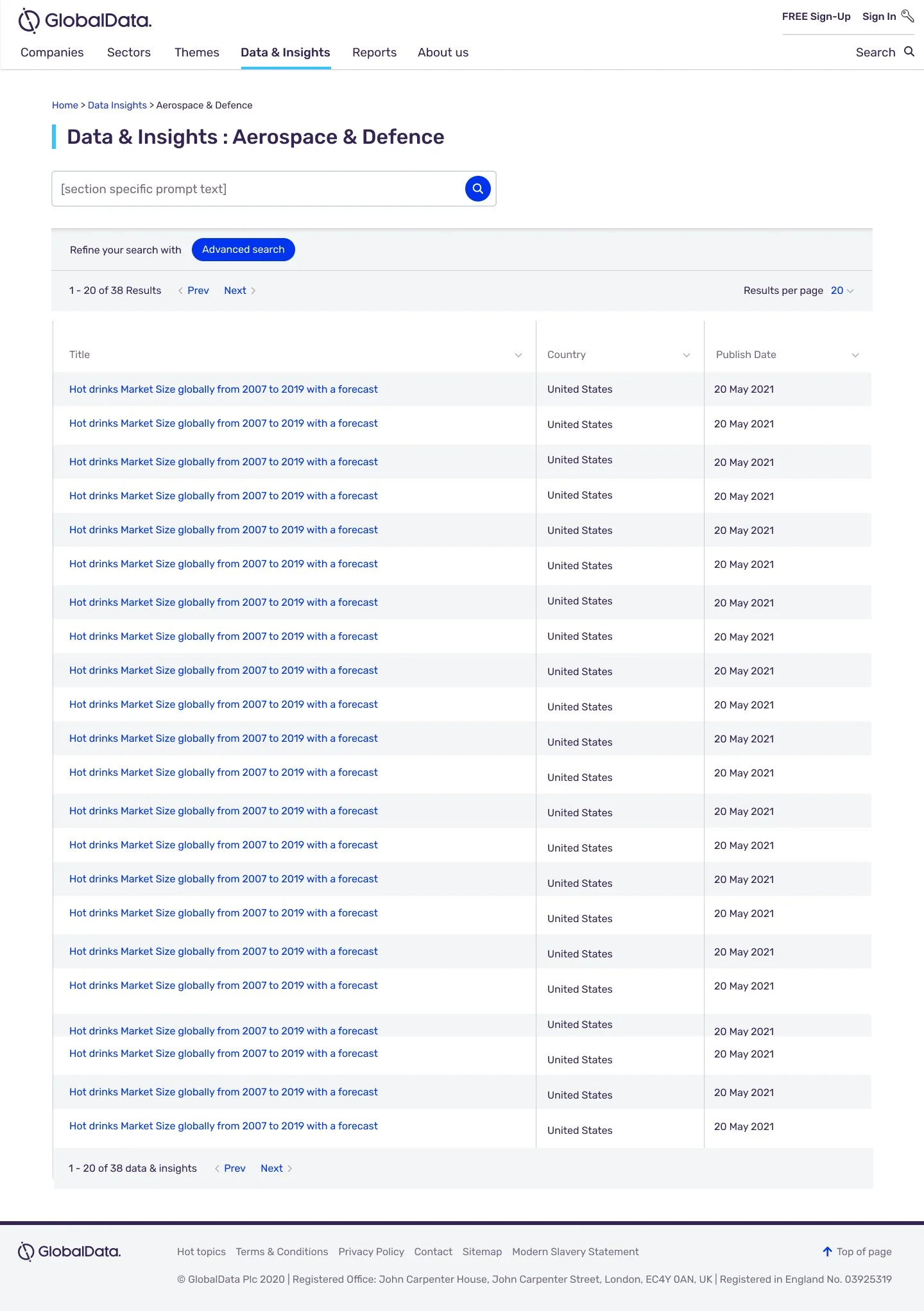
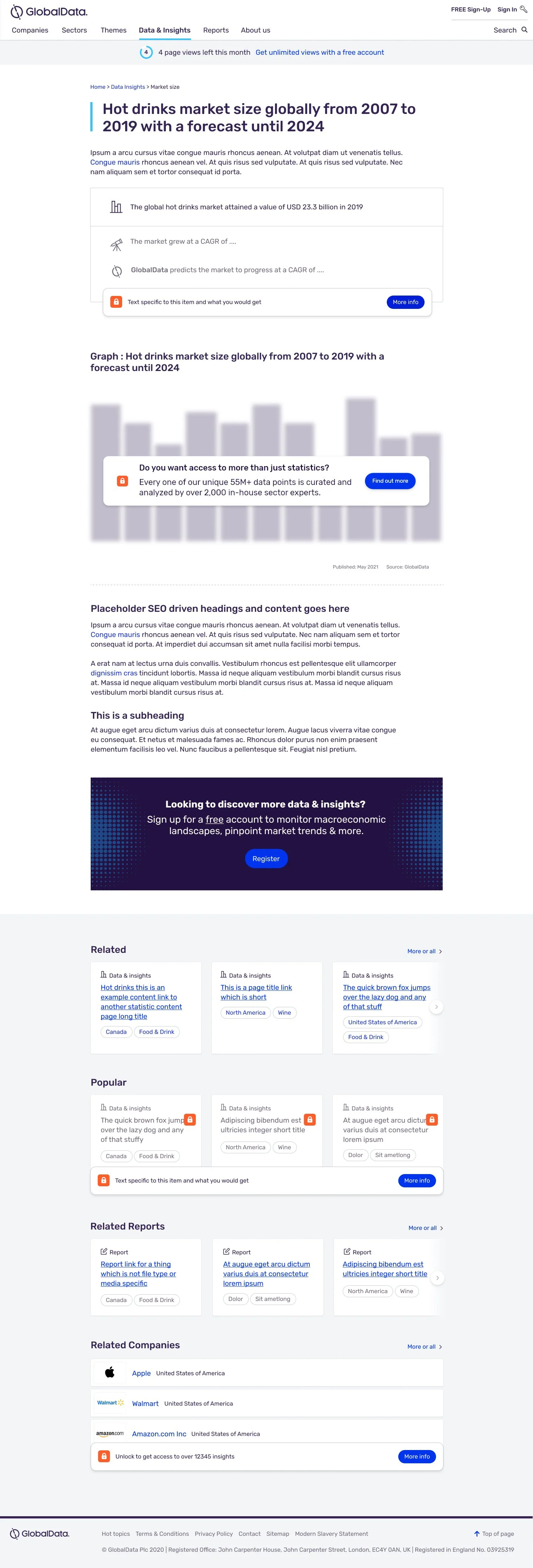
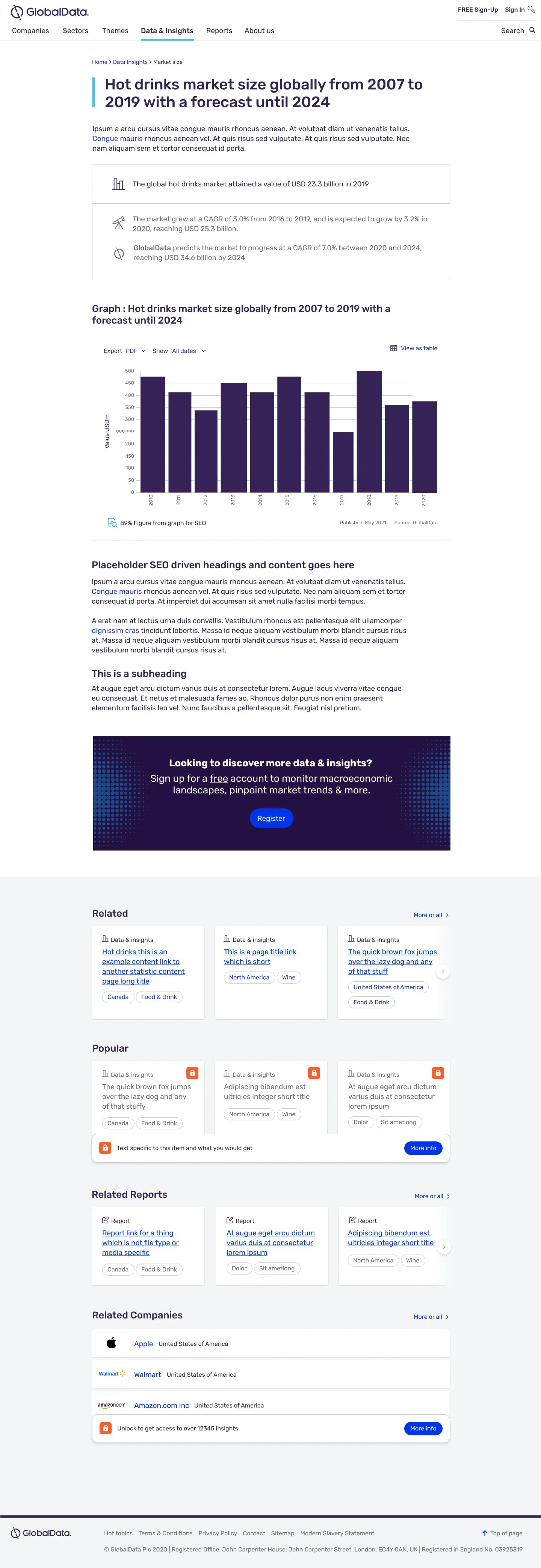
Advanced Search Hi-Fidelity Screens (Mobile)
Advanced Search ScreensI designed Itriom’s first advanced search tool for mobile. The work took several months due to stakeholders' inputs/reviews, and I tested the search tool throughout the process with real users to get feedback ready for iteration.
The Result
The new platform was released last year with mobile version and with a much improved advanced search tool. Globaldata continues its long success and is ready to innovate further with new product development around AI.

